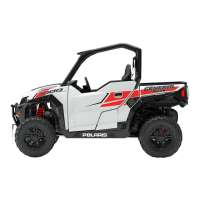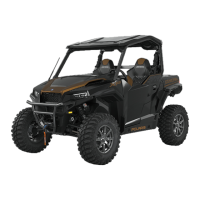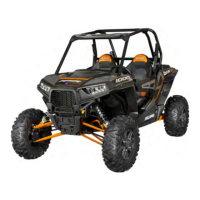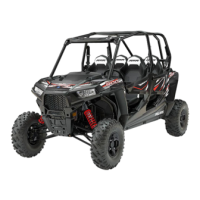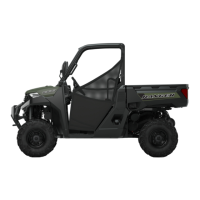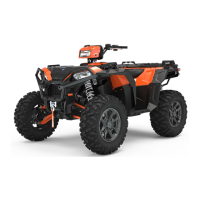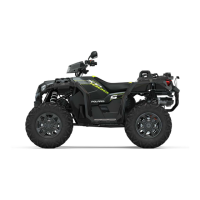SEAT BELT INSPECTION
WARNING
Failure to perform regular inspection can reduce the effectiveness of the seat
belt during a crash and could result in serious injury or death.
Inspect all seat belts for proper operation before each use of the vehicle.
1. Push the latch plate into the buckle until it clicks. The latch plate must slide
smoothly into the buckle. A click indicates that it's securely latched.
2. Push the red release latch in the middle of the buckle to make sure it
releases freely.
3. Pull each seat belt completely out and inspect the full length for any damage,
including cuts, wear, fraying or stiffness. If any damage is found, or if the seat
belt does not operate properly, have the seat belt system checked and/or
replaced by an authorized dealer.
4. To clean dirt or debris from the seat belts, sponge the straps with mild soap
and water. Do not use bleach, dye or household detergents. Rinse the entire
length of the belt webbing. Use a garden hose to flush out the retractor and
latch housings regularly.
SEAT AND STORAGE COMPARTMENTS
A small storage compartment is located
between the driver’s seat and
passenger’s seat
q
.
If your model is equipped with a storage
console and cup holders located
between the seats, lift the console lid to
access the storage compartment.
The ECU is located in the compartment
behind the driver’s seat. Do not use this
area for storage.
The electrical compartment is located
under the driver’s seat. Never use the
electrical compartment for storage.
Remove the driver’s seat to access the
battery and fuse box.
SEAT REMOVAL AND COMPARTMENT ACCESS
Pull the rear edge of a seat upward to release the latch pins from the grommets.
Roll the seat forward to access the under-seat area. To completely remove a
seat, roll the seat forward and lift the seat tabs from the seat base mounts.
40
FEATURES AND CONTROLS

